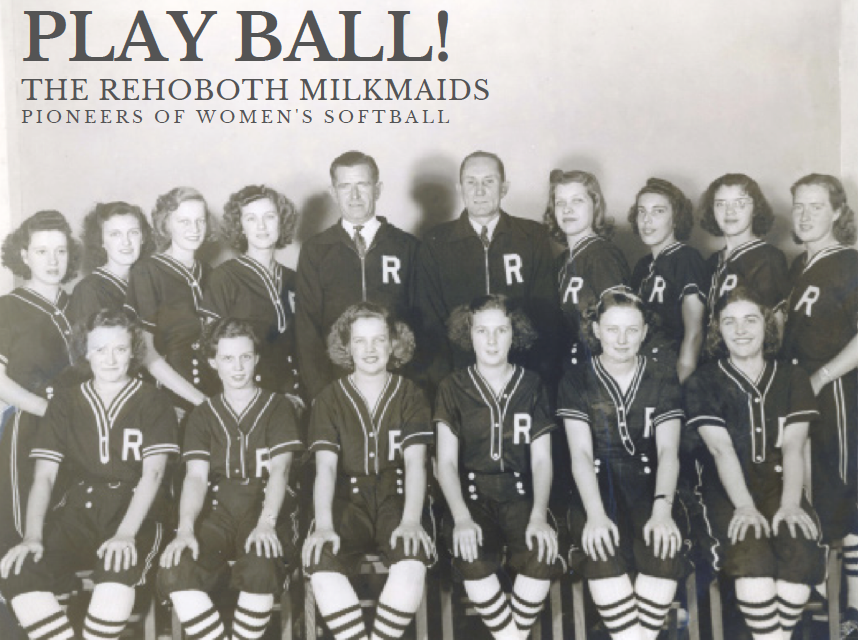
The Rehoboth Milkmaids softball team (formally known as the Tigerettes) was formed in 1938 by a group of young women living in Rehoboth, Massachusetts and surrounding areas. With a desire to play softball and a love for the game, the Milkmaids set out to raise money and support for their team, eventually raising enough to buy equipment. Uniforms were hand-made by a mother of some of the players, the team practiced each day, and the Milkmaids dedicated themselves to the softball season. The Milkmaids were a successful team, but without sponsorship, could not afford to attend the national championships in Detroit, Michigan in 1939. In 1940, the team moved to Pawtucket, where they gained sponsorship from the Pawtucket Times newspaper. With financial support from the Times, the Rehoboth Milkmaids changed their name to the Darlington Milkmaids, which expanded their opportunities for leagues and tournaments. The Milkmaids played at the Boston Garden on Thursday nights, and having continued success, won the Rhode Island State Championship that year. Sponsored by the newspaper, the Milkmaids joined teams from all over the country at the championship. The Milkmaids made it to the semi-finals in the Tournament. This marked the end of the team’s competition, but it was only the beginning of women’s roles as successful members of publicized sports teams during WWII and onward. As men aged 18 and over were drafted into the military, Major League Baseball Parks introduced the All-American Girls Professional Baseball League in 1943. The Milkmaids launched the career of Louise “Lou” Arnold of Pawtucket. Arnold gained national fame, playing in the League that was featured in the 1992 film A League of Their Own. Lou received her own baseball card and a spot in the National Baseball Hall of Fame in Cooperstown, New York.
Featured Artifacts
Click on each artifact to learn more about it.
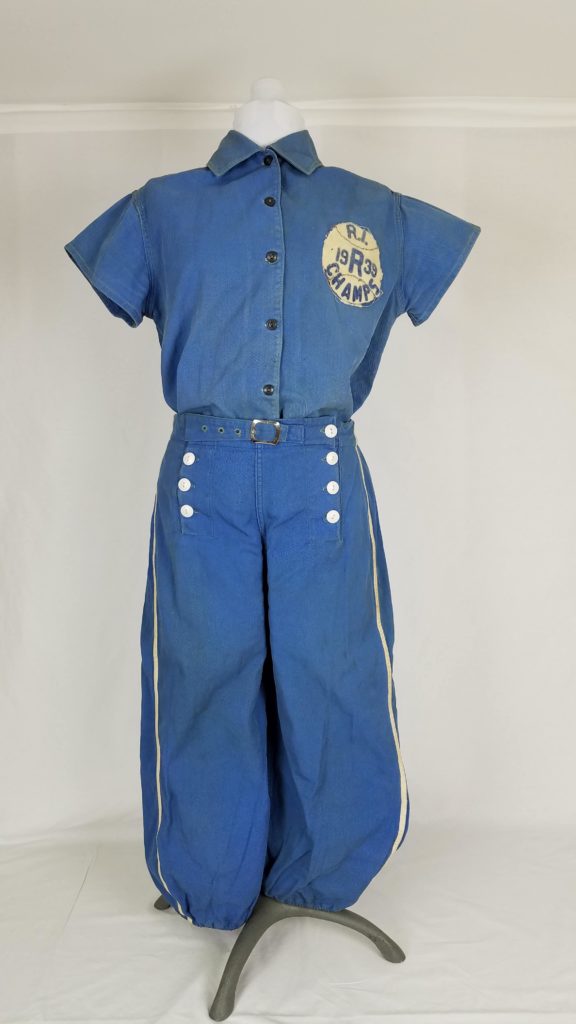
Milkmaids Blue Uniform, 1941 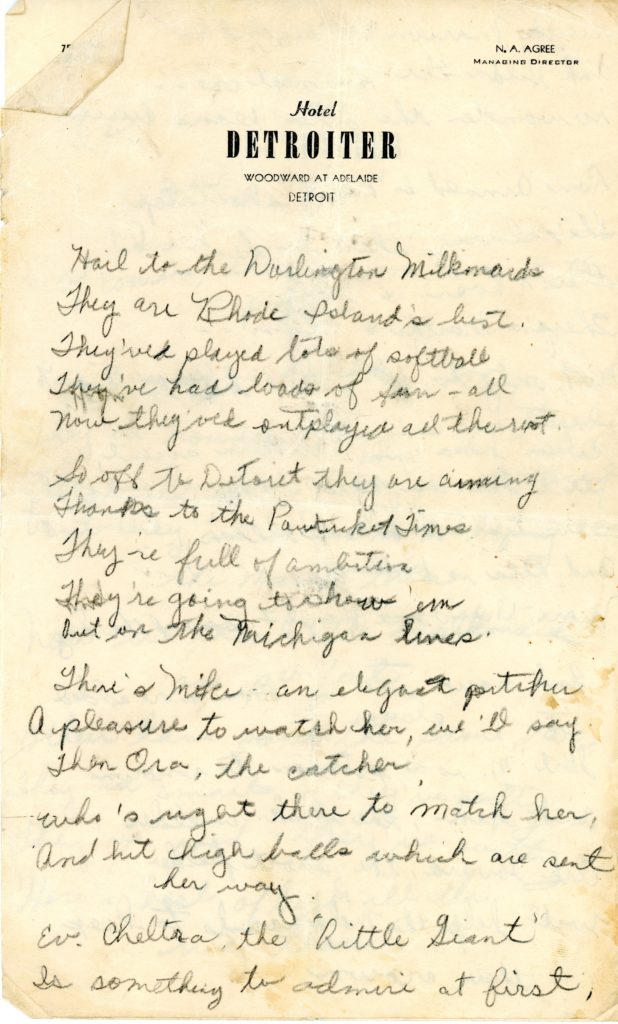
Handwritten Note, 1941 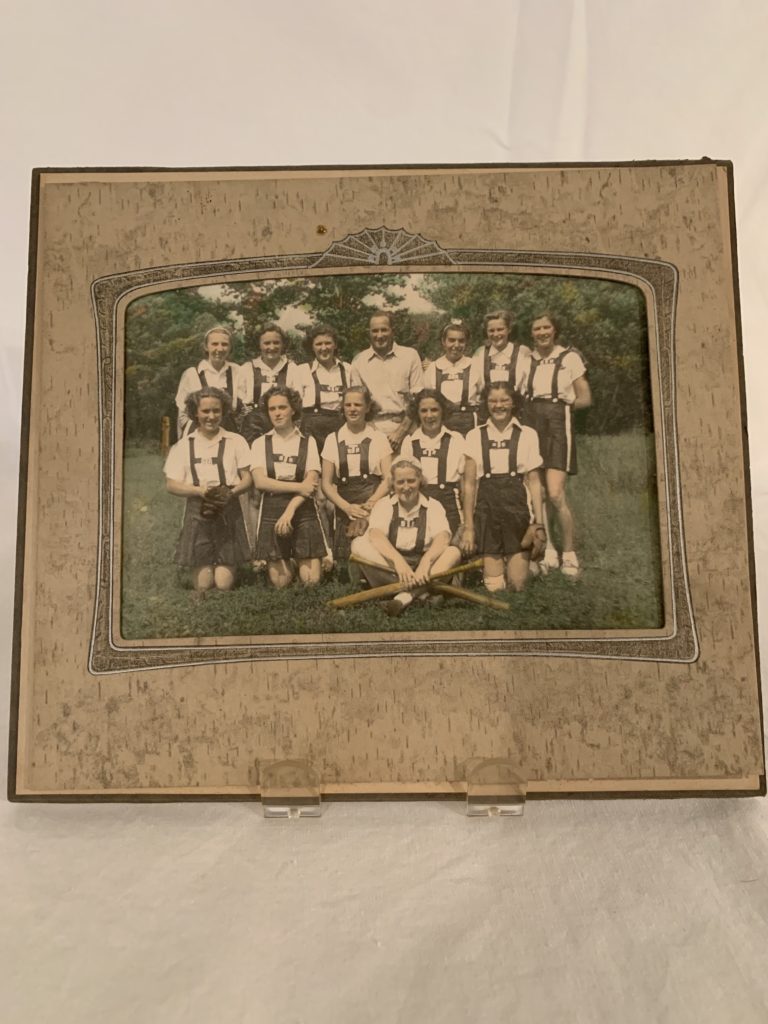
Rehoboth Tigerettes, 1938 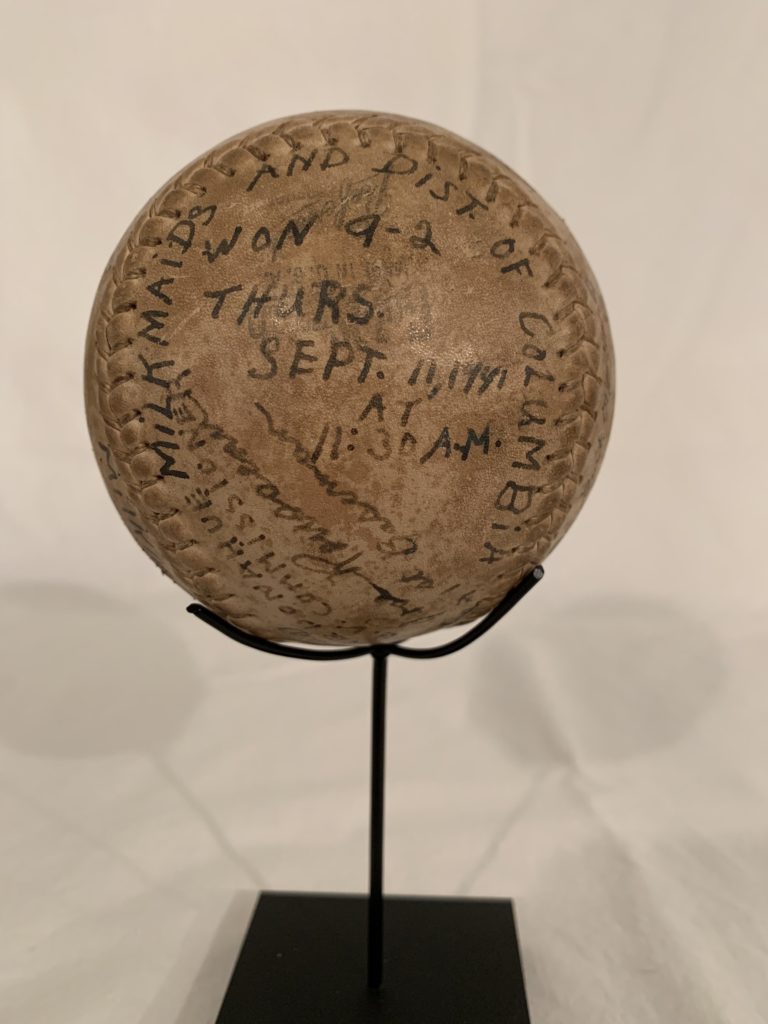
Signed Spaulding Softball, 1941 
Championship Trophy, ca. 1941 
Ken Wel Fielder’s Glove, ca. 1938
Featured Content
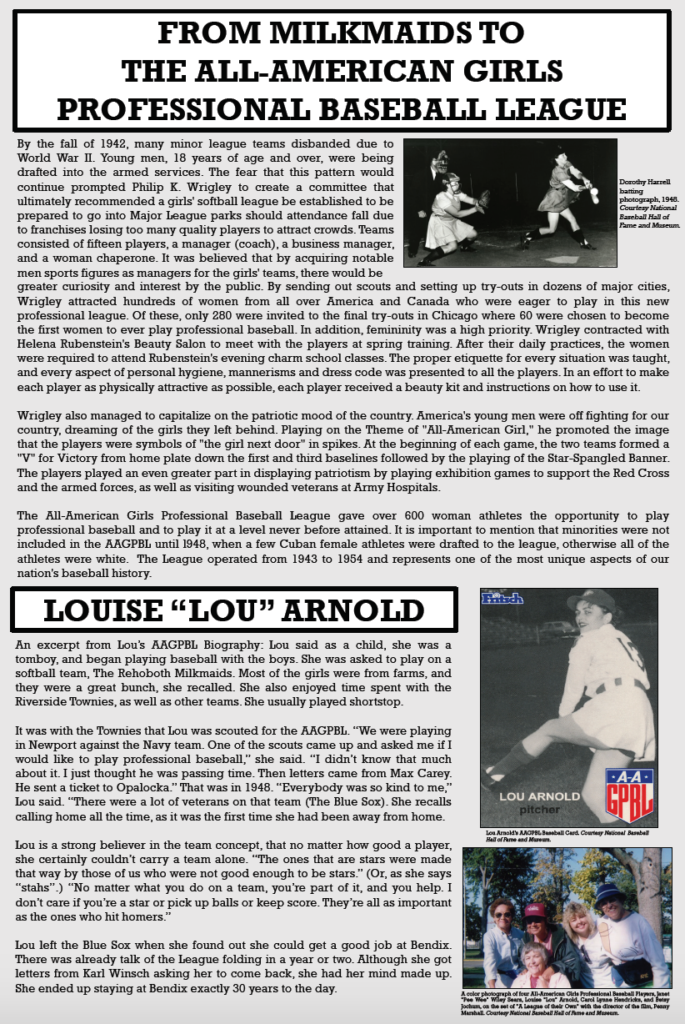
Educational Resources
Find lesson plans related to our exhibit for all age groups below. Visiting the exhibit enriches the lesson but is not necessary to complete them. Learn something new and have fun! Just click the buttons that correspond to each age group to download.
WOMEN AND BASEBALL IN REHOBOTH AND BEYOND
Do you like to play sports? Do you think there are sports that only girls or boys play? Let’s take a look at why this might be.
Lesson Duration: One Class-Period
Objective: Explain the meaning of the word ‘stereotype’. Understand that stereotypes and unfair judgments about individuals and groups affect everyone. Analyze a real situation in which female ballplayers challenged stereotypes.
Elementary School Lesson Plan
WOMEN AND BASEBALL IN REHOBOTH AND BEYOND – REQUIRES THE FILM “A LEAGUE OF THEIR OWN” A copy can be borrowed from the Blanding Library.
Begin the lesson with a discussion about women in baseball. Gauge students’ familiarity with women’s baseball history by asking questions such as:
• Can you think of any female baseball players that play today?
• Have you heard of women / girls playing baseball in the past?
• Have you ever heard of any women’s baseball teams?
Lesson Duration: Two Class-Periods
Objective:
Learn about the experiences of women who played with the All-
American Girls Professional Baseball League. Recognize the role of the All-American Girls Professional Baseball League in changing public opinion about female athletes. Analyze and evaluate primary and secondary source documents. Compare a fictional film depiction of the AAGPBL with facts learned
from primary and secondary source analysis.
Middle School Lesson Plan
HIGH SCHOOL LESSON PLAN:
WOMEN AND BASEBALL IN REHOBOTH AND BEYOND – REQUIRES THE FILM “A LEAGUE OF THEIR OWN”. A copy can be borrowed from the Blanding Library.
Begin the lesson with a discussion about women in baseball. Gauge students’ familiarity with women’s baseball history by asking questions such as:
Have you ever heard of women or girls playing baseball in the past?
Have you ever heard of any women’s baseball teams?
Lesson Duration: One to Two Class-Periods
Objective: Learn about the experiences of women who played with the All-American Girls Professional Baseball League. Recognize the role of the All-American Girls Professional Baseball League in changing public opinion about female athletes. Analyze and evaluate primary and secondary source documents. Compare a fictional film depiction of the AAGPBL with facts learned from primary and secondary source analysis. Explain, in their own words, Title IX (of the Educational Amendments of 1972 to the 1964 Civil Rights Act).
Materials:
- The film A League of Their Own (PG)
- A copy of “A Guide for All-American Girls” for each student (included)
- Internet access for student research— A variety of books and other sources (See the “Potential Sources for Title IX Research” sheet included with this lesson)

